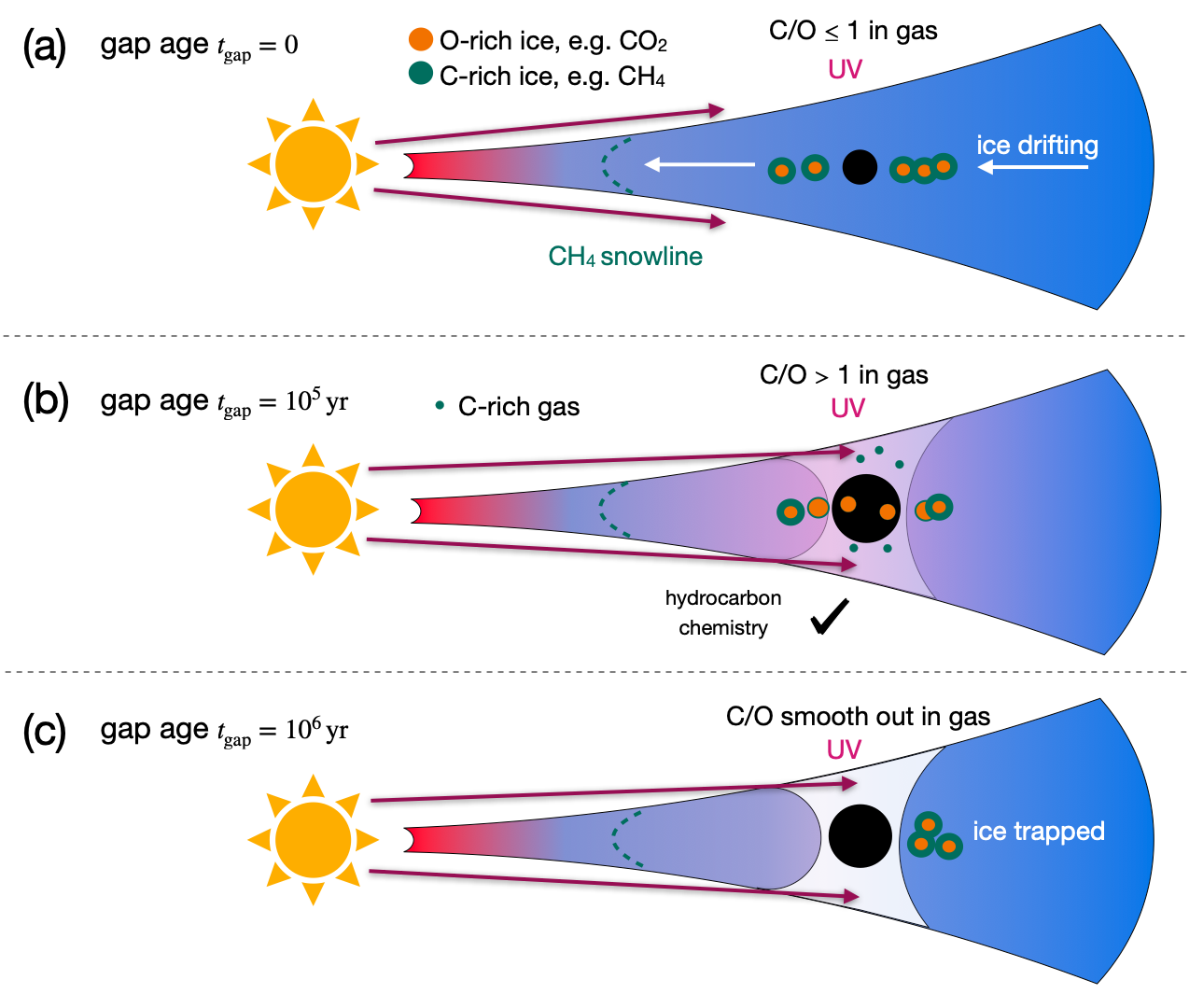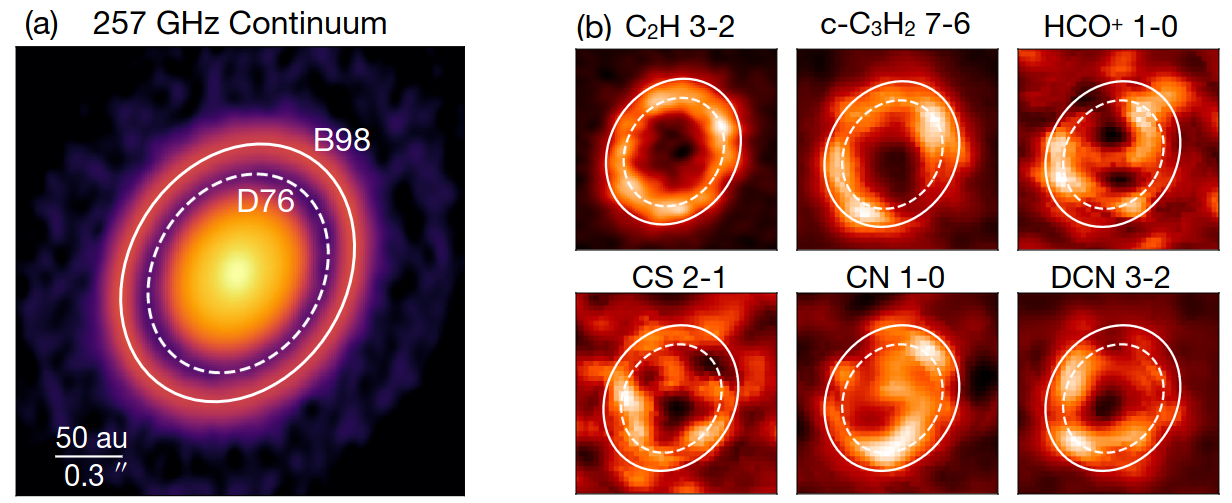Protoplanetary disks serve as the cradles of planet formation, often revealing captivating features such as bright rings and dark gaps in both dust continuum and gas emission maps. These features have traditionally been attributed planets, which shape the disk by gap-opening and altering its rotation profiles, effects that can potentially be observed.
A new study led by Tsinghua Department of Astronomy student Haochang Jiang, and including PhD student Yu Wang and Prof. Chris Ormel, offers fresh insights into the intricate relationship between these disks and the planets they harbor. The team suggests that accreting giant planets leave behind another indirect signature. According to this research an accreting planet alters the disk chemical composition in the vicinity of the planet, which can be detected observationally in the form of molecular emission lines (see Fig. 1).

Fig. 1. Schematic showing how a gap-opening planet triggers the C2H ring associated with the continuum gap. (a) Before runaway growth, a small planet is embedded inside the gaseous disk and carbon-rich ice is frozen out on pebbles. (b) During runaway gas accretion, the planet grows rapidly, consumes the pebbles in its vicinity, and opens a gas gap in the disk. Since the accreting planet is hot, carbon-rich volatile ice (e.g., methane) with lower sublimation temperature is readily liberated from the ice. On the other hand, the sublimation of H2O or CO2, which are the major oxygen carriers, can only be reached in the immediate vicinity of the planet RHill, at which point the material is lost to the planet. The discrepancy in sublimation temperature renders the gas C/O>1. In addition, stellar UV photons penetrate the gas gap. The combination of C/O>1 and high UV fluxes trigger photochemistry reactions to form the C2H ring; (c) After the gap opens, the supply of sublimated pebbles terminates due to the gap opening. The C/O ratio is smoothed out across the disk through radial mixing by diffusion.
Leveraging the state-of-the-art Athena++ hydrodynamical code with a pioneering module capable of tracking phase change processes like ice sublimation, the team has conducted 2D hydrodynamical simulations to uncover the link between accreting planets and disk chemistry. Through these simulations, they have demonstrated that an accreting planet positioned beyond the methane snowline can heat the surrounding gas, causing carbon-rich molecules to sublimate from pebbles. This process locally enriches the disk's gas-phase carbon-to-oxygen (C/O) ratio, offering a plausible explanation for the observed line-emission rings detected by the Atacama Large Millimeter/submillimeter Array (ALMA).
These findings provide a compelling rationale for instances such as MWC 480, a protoplanetary disk where earlier observations identified molecular line-emission rings coincide within a continuum gap^1,2 (see also Fig. 2). The study reveals that this correlation is naturally accounted for if a planet would reside in the D76 gap, a hypothesis to be further tested and confirmed with extensive observations at optical and infrared wavelengths.

Fig. 2. ALMA Observations of the MWC 480 disk. (a): 257 GHz mm dust continuum emission^3; (b): Line emission moment 0 maps^4 of six molecular transitions (selected for illustrative clarity; in total over ten lines feature similar ring-like structures). The names of lines are labeled above each panel. The dashed ellipse indicates the D76 continuum gap, and the solid ellipse the B98 continuum ring on the outside in all panels.
This approach introduces a novel perspective, demonstrating how the accretion process of giant planets actively shapes the chemical composition of their environment. By influencing disk irradiation and elemental abundances, planets transcend the conventional role of passively inheriting primordial disk chemistry.
This pioneering work by the team showcases the potential of combining theoretical calculations with cutting-edge observations to unravel the intricate link between disk and planet formation. Collaborating with Prof. Sebastiaan Krijt from the University of Exeter and Prof. Ruobing Dong from the University of Victoria, this study equips astronomers with enhanced insights into the journey of planet formation within the realm of protoplanetary disks.
The study is published in Astronomy & Astrophysics (A&A), and the paper can be accessed at: https://ui.adsabs.harvard.edu/abs/2023arXiv230708704J/abstract.
Refs:
1. Liu, Y., Dipierro, G., Ragusa, E., et al. 2019, A&A, 622, A7
2. Jiang, H., Zhu, W., & Ormel, C. W. 2022, ApJ, 924, L
3. Sierra, A., Pérez, L. M., Zhang, K., et al. 2021, ApJS, 257, 1
4. Law, C. J., Loomis, R. A., Teague, R., et al. 2021, ApJS, 257


